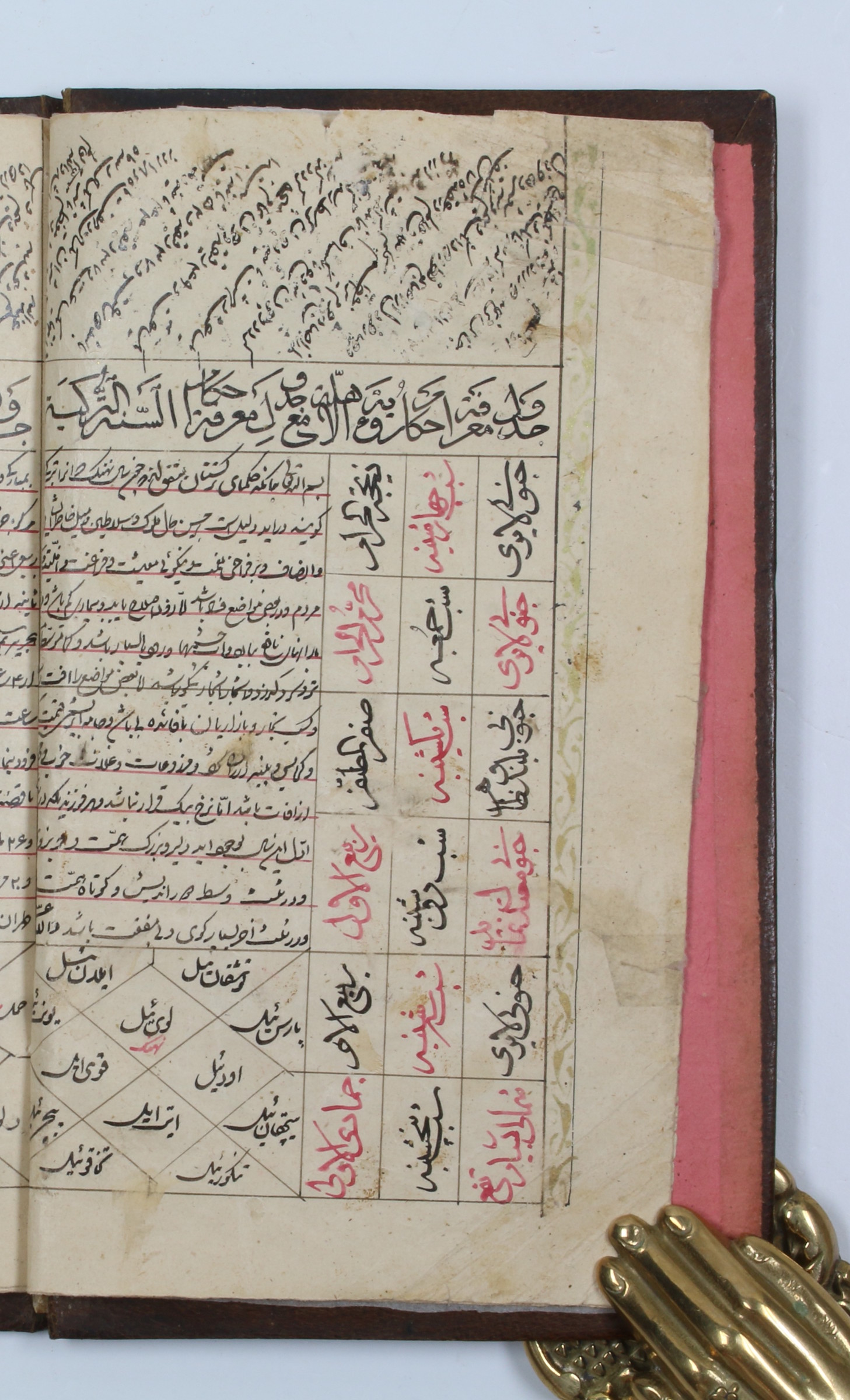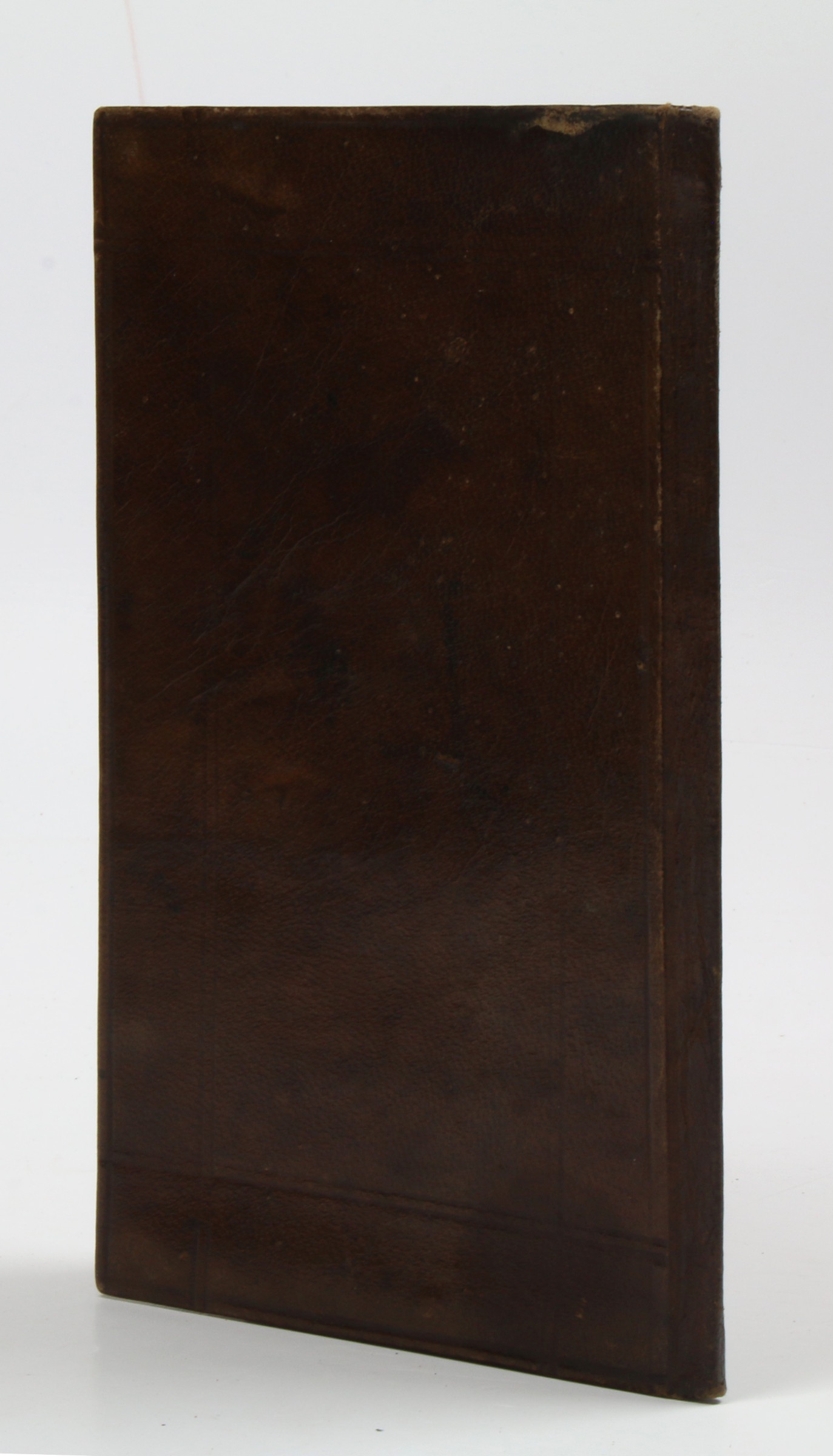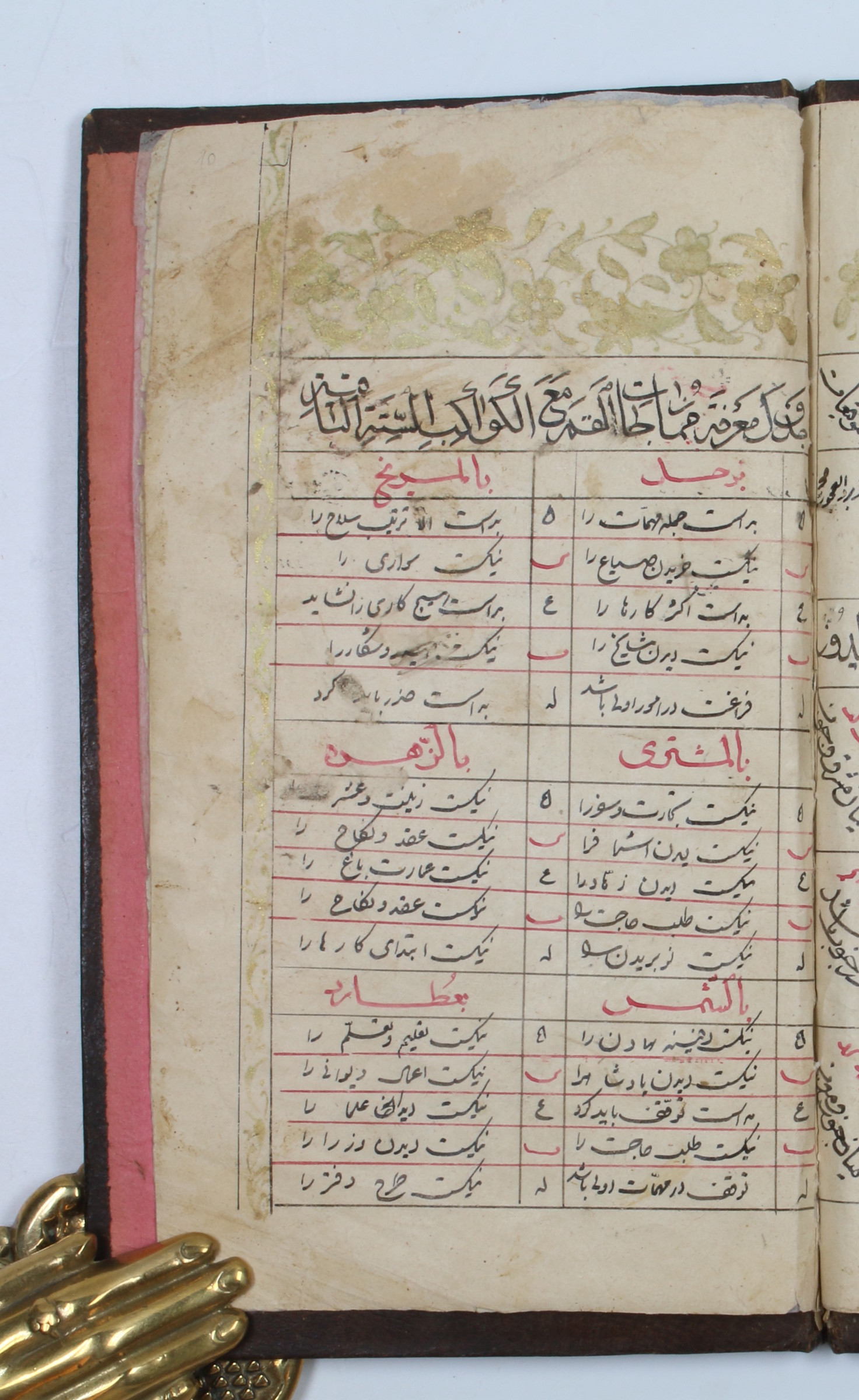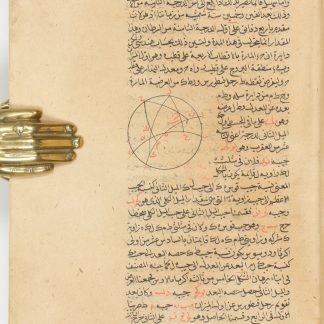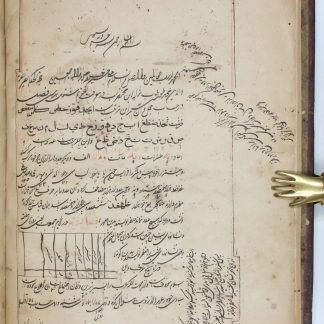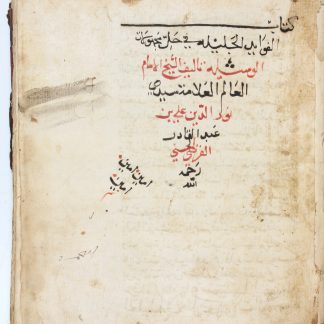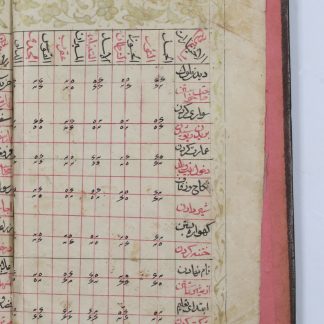Persian almanac
Persian manuscript almanac.
8vo (115 x 185 mm). 11 ff. Persian and Arabic manuscript on laid paper. Black and red nasta'liq script in rubricated rows and columns with Arabic headings in fine riq'ah script and gilt floral ornaments to each page. Contemporary full brown leather ruled in blind.
€ 3,500.00
A beautiful monthly almanac arranged according to the Persian Jalali solar calendar, with a general horoscope for the Islamic year 1285. The first table offers astrological advice as to when in the year to perform or begin an activity, organized on the basis of the twelve signs of the zodiac, listing over 30 activities such as didan-e moluk (to see/witness rulers), 'emarat kardan (to build a house), nikah (to marry), hotneh kardan (to have one's son circumcised), nam nihadan (to name a child), safar kardan (to travel), and so forth. The boxes of the calendar itself are often marked with abbreviations or numeral expressions of Arabic words indicating the auspicious or inauspicious values of the astral conjunctions on a given day. Two short Persian poems on the final page, one of them entitled "Dar ahval-e kavakeb" ("On the prosperous moments of the planets"), the other in praise of the virtues and power of the signs of the zodiac, complete the manuscript.
The Jalali solar calendar had been commissioned by the Seljuk Sultan Halal al-Din Malik Shah I in 1073. A committee of astronomers, including Omar Khayyam, at the Imperial observatory of Isfahan compiled the complex calendar based on observations made at Isfahan, Rey, and Nishapur, and it was finally adopted on 15 March 1079, replacing the Islamic lunar calendar that posed the problem of seasonal drift. The Jalali calendar remained in use for over eight centuries, and some of its later variants are still in use today in Iran and Afghanistan.
Exceptionally well preserved.


